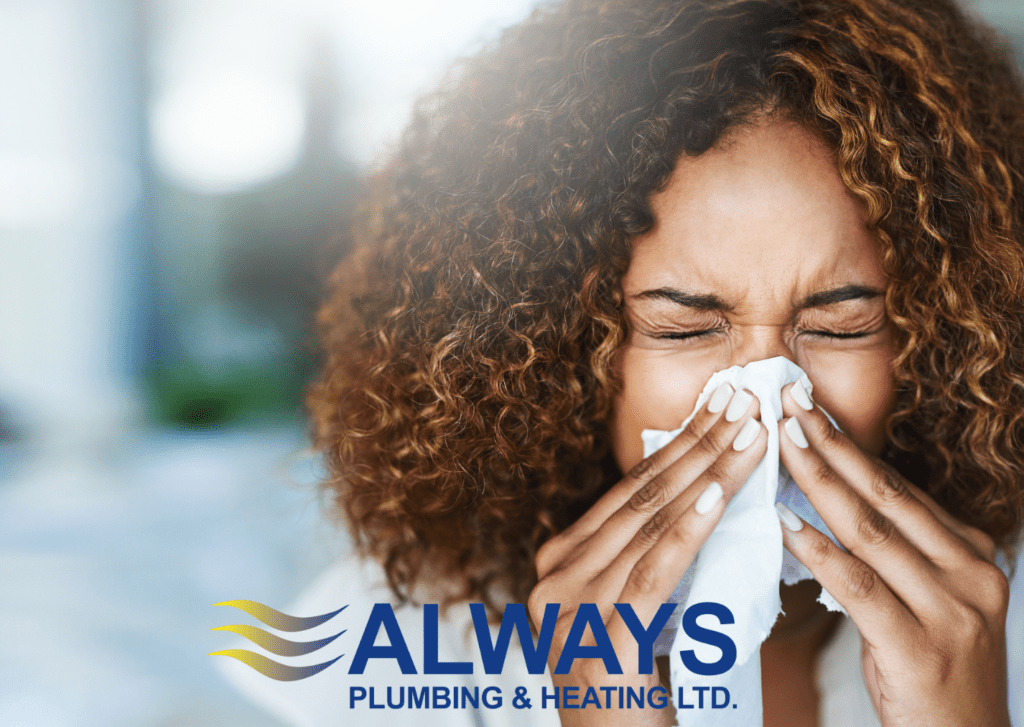Invisible to the naked eye, microscopic particles are swirling everywhere in our homes, causing runny noses, coughing, headaches, nausea, and even respiratory infections. The wear and tear on HVAC equipment can also cause a host of maintenance problems, like poor airflow, clogged coils, and compressor failure.
Always Plumbing has a wide range of indoor air purifiers to remove the contaminants in your home, from HEPA Air Filters to hospital-grade UVC Light air purifiers. With flu season just around the corner, it is beneficial that you protect your home and your family with a Clean Air Defence System. This system is comprised of HEPA filters plus a UVC Light. Airborne flu viruses can be captured and sterilized, preventing them from recirculating throughout your home via your ductwork. A standard MERV10 furnace filter alone captures only 10% of flu viruses, whereas adding an ultraviolet lamp triples that total single pass capture/sterilize rate to 35%.
What is Ultraviolet Light and how does it work?
UVC lamps target the DNA of microorganisms, destroying their cells or making replication impossible. Mounted on your home’s HVAC equipment, UVC energy destroys surface biofilm, a gluey matrix of microorganisms (bacteria, fungi, debris, et al.) that grow in the presence of moisture. Biofilm leads to a host of indoor air quality (IAQ) and operational problems that are sometimes mistakenly attributed solely to mold. UVC also destroys airborne viruses and bacteria that circulate through an HVAC system. UVC light was artificially created in the 1880’s. By the 1930’s surgeons were using UVC light in operating rooms to reduce airborne bacterial and viral infections.
Ultraviolet (UV) lights have been used since the 1930s in commercial and industrial procedures. In the 1990’s, UVC lamps started to emerge as in-duct air purifiers for residential use. UV lights are a proven technology that kills biological growth and disable the DNA of airborne micro-organisms and germs.
Benefits of UVC Systems
UVC Lamps disinfect the air by neutralizing airborne pathogens such as bacteria, viruses, and mold. By controlling surface and airborne microbes, UVC can be beneficial in many ways, including Indoor Air Quality (IAQ) control and energy savings:
- IAQ Control. UVC improves air quality by preventing the spread of airborne viruses and reducing the allergy and asthma symptoms triggered by biofilm/mold. It creates safer and more comfortable indoor environments, resulting in a happier and healthier home for you and your family.
- Energy Savings. Studies show that a small amount of biofilm buildup on a coil increases energy consumption by 21.5%. UVC provides continuous cleaning of coils to eliminate biofilm and protect your home’s HVAC equipment. Energy savings can range from 10% to 28%.
Always Plumbing & Heating are your local indoor air quality experts. We are a local supplier of Dynamic Series2 Germicidal UVC Lamps, which are whole home IAQ systems that are installed directly on your central heating ductwork. We provide a range of quality systems that protect the air you breathe and reduce the spread of flu viruses throughout your home.
Credits: Data extracted from https://www.dynamicaqs.com/
